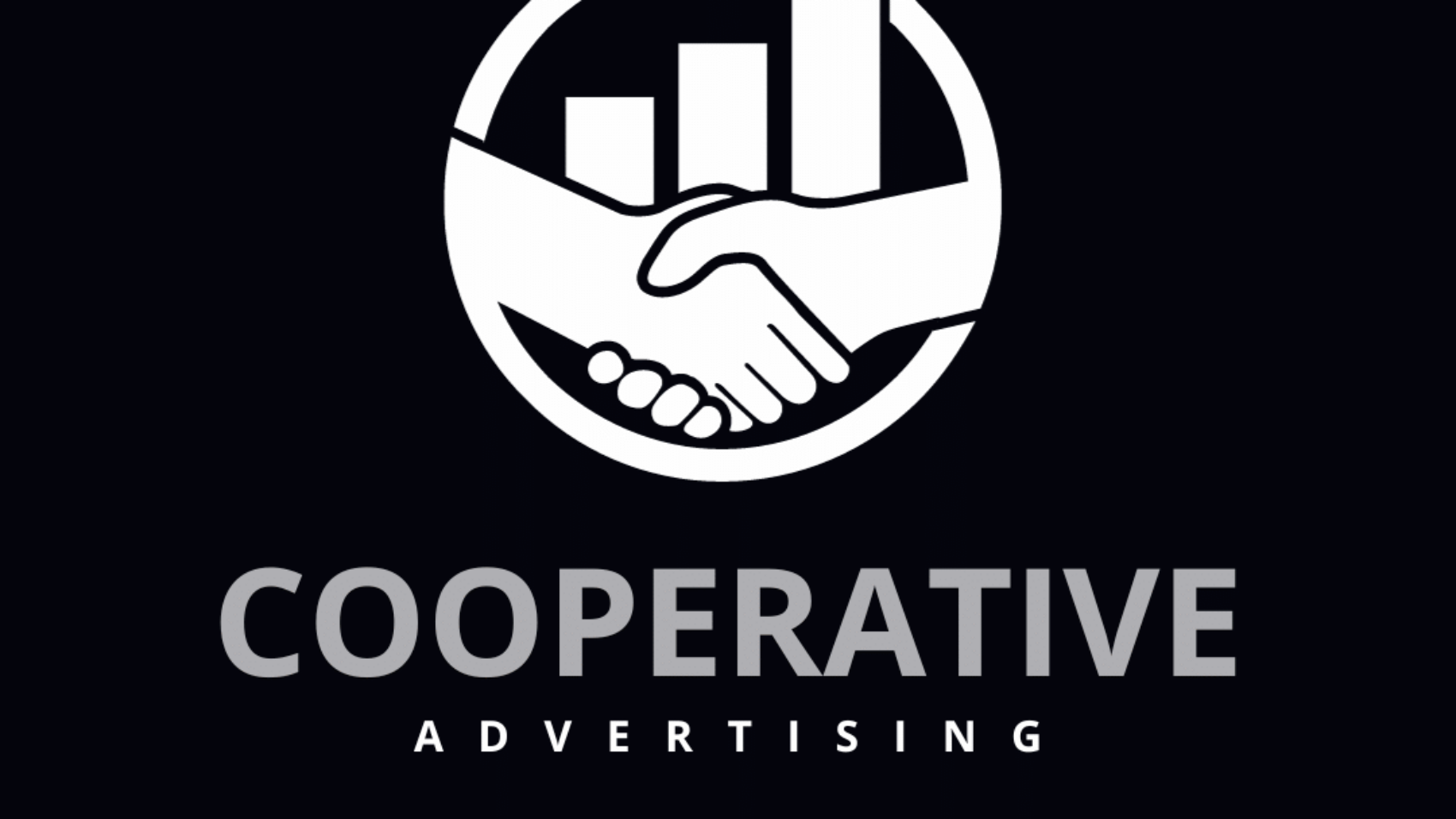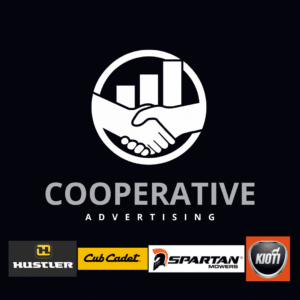In the ever-evolving commerce landscape, the pivotal role of digital marketing cannot be overstated. For lawn mower and tractor dealerships, establishing a robust online presence is not merely a trend; it’s a strategic move towards thriving in a highly competitive market. In this blog post, we explore the core of digital marketing for dealerships, introducing the transformative concept of Cooperative Advertising and shedding light on its relevance.
Digital Marketing: A Necessity for Growth
The days of relying solely on traditional advertising methods have long passed. As consumer behavior shifts towards digital platforms, lawn mower and tractor dealerships must adapt to these changing tides. A robust online presence is more than visibility; it’s about creating a dynamic space where potential buyers can engage, explore, and confidently choose the right equipment for their needs.
Cooperative Advertising: Revolutionizing the Dealer-Manufacturer Dynamic
Enter Cooperative Advertising – a symbiotic relationship between manufacturers and dealerships that promises mutual benefits. This collaborative approach involves shared advertising expenses, unlocking new avenues to reach a broader audience. For lawn mower and tractor dealerships, Cooperative Advertising for lawn mower dealers isn’t just a marketing strategy; it’s a lifeline that enhances brand recognition, amplifies marketing efforts, and effectively drives sales.
Understanding Cooperative Advertising: A Mutual Investment for Mutual Gains
Cooperative Advertising operates on a simple yet effective principle – manufacturers and dealerships unite to create impactful marketing campaigns. The financial burden is shared, with both parties contributing to the budget. This collaboration ensures a more extensive reach and a more compelling message. It’s a symbiotic relationship where manufacturers benefit from increased product exposure, and dealerships gain from the established brand presence.
Components of Cooperative Advertising: Where Collaboration Takes Center Stage
- Shared Budgets: Manufacturers and dealerships pool resources, creating a more substantial budget for marketing initiatives. This shared financial commitment often leads to more extensive and higher-quality campaigns than individual efforts.
- Coordinated Campaigns: Cooperative Advertising involves coordinating campaigns to align with overarching marketing strategies. This ensures a consistent and unified message across various channels, reinforcing brand identity.
- Customized Support: Manufacturers provide dealerships with customizable marketing materials, such as ad templates, promotional content, and digital assets. This support streamlines the creation process, maintaining brand consistency while allowing for localized customization.
At its core, Cooperative Advertising is a strategic alliance between manufacturers and dealerships where both parties actively participate in funding and executing joint marketing campaigns. The primary purpose is to amplify brand visibility, drive product sales, and establish a unified brand presence in the market. Cooperative Advertising for lawn mower dealers adapts to the unique needs of the industry by tailoring campaigns that resonate with local markets while aligning with the broader marketing goals of manufacturers like Cub Cadet, Hustler, KIOTI, Spartan Mowers, and Exmark.
The Significance of Collaboration: Strengthening Industry Bonds
Collaboration lies at the heart of Cooperative Advertising, fostering a mutually beneficial relationship between manufacturers and dealerships. In an industry where trust, credibility, and shared success are paramount, working together becomes a strategic imperative.
- Strengthens Brand Consistency: By uniting marketing efforts, manufacturers and dealerships ensure a consistent brand message. This uniformity not only reinforces brand identity but also contributes to a seamless customer experience.
- Expands Market Presence: The collaborative approach allows both parties to tap into each other’s customer bases, expanding market reach beyond what individual efforts could achieve. This synergy creates a more formidable market presence.
- Supports Localized Marketing: For lawn mower and tractor dealerships, localized marketing is crucial. Cooperative Advertising enables manufacturers to provide dealers with resources for tailored campaigns, allowing them to connect with specific demographics and regional nuances effectively.
How Cooperative Advertising Benefits Both Parties: A Dual Triumph
- Manufacturers Reap Increased Exposure: Manufacturers leverage Cooperative Advertising to enhance the visibility of their products. Through joint efforts with dealerships, they gain access to diverse markets and audiences, fostering stronger brand recognition.
- Dealerships Enjoy Marketing Muscle: For dealers, Cooperative Advertising provides access to resources they might not have individually. This includes shared funding for campaigns, access to manufacturer-created marketing materials, and the credibility associated with well-established brands.
- Cost-Effective Marketing Strategies: Shared financial responsibilities mean that both manufacturers and dealerships can engage in more robust marketing strategies without straining their individual budgets. This cost efficiency allows for more extensive and impactful campaigns.
Cooperative Advertising in the Lawnmower and Tractor Industry: Nurturing Growth through Collaboration
In the dynamic landscape of lawnmower and tractor dealerships, the concept of Cooperative Advertising takes center stage as a pivotal strategy for nurturing growth. This section delves into the intricate interplay of this collaborative approach within the industry, shedding light on how manufacturers such as Cub Cadet, Hustler, KIOTI, Spartan Mowers, and Exmark are reshaping the marketing narrative.
Cooperative Advertising Unveiled: Tailoring Collaborative Campaigns for Impact
- Shared Vision, Shared Success: Cooperative Advertising, within the context of lawnmower and tractor dealerships, involves manufacturers and dealers jointly investing in marketing campaigns. The collaborative nature of this approach allows for a shared vision, aligning the marketing strategies of both parties for maximum impact.
- Adaptability to Local Markets: What sets Cooperative Advertising apart in this industry is its adaptability. Dealerships, often deeply rooted in local communities, can tailor campaigns to resonate with specific demographics and market nuances. Manufacturers support these efforts by providing customizable marketing materials, ensuring a harmonious blend of global brand messaging and localized appeal.
The Dynamics of Benefits: Flourishing Alliances Between Manufacturers and Dealerships
- Manufacturer Gains: Beyond Product Exposure: Manufacturers stand to gain significantly from Cooperative Advertising. The shared campaigns increase product exposure and reinforce brand identity. By tapping into the local expertise of dealerships, manufacturers can penetrate diverse markets with tailored messaging.
- Dealership Advantages: Leveraging Manufacturer Support: For lawnmower and tractor dealerships, Cooperative Advertising is a game-changer. Access to shared budgets means dealers can engage in more substantial and impactful campaigns. Additionally, the association with well-established manufacturers enhances credibility, fostering trust among consumers.
- Unified Cost Efficiency: Amplifying Marketing Potential: One of the most substantial benefits of Cooperative Advertising lies in its cost-effective nature. Shared financial commitments allow both manufacturers and dealerships to stretch their marketing budgets further, engaging in campaigns that would be financially challenging if undertaken independently.
Dealers Digital Marketing: Powering Your Online Success
In the crowded digital landscape, Dealers Digital Marketing emerges as a beacon for lawnmower and tractor dealerships seeking to navigate the complexities of online marketing. With a wealth of experience in handling cooperative advertising dollars, Dealers Digital Marketing is not just a service provider but a strategic partner committed to propelling dealerships towards digital success.
Exmark Dealership Websites: Elevating Your Online Showcase
Affordability and Impact in Harmony
Dealers Digital Marketing introduces Exmark dealership websites at an attractive price point of $37.50 per month after co-op. These websites are not just platforms; they are digital showcases designed to captivate and convert potential customers. Affordable yet impactful, they ensure that dealerships, regardless of size, can establish a compelling online presence.
Power Package: Exmark Dealer Site + DealerAMP for $164.50 per Month
Maximizing Impact with Comprehensive Solutions
For those dealerships aiming for an all-encompassing digital strategy, Dealers Digital Marketing presents the Power Package – an Exmark dealer site bundled with DealerAMP for just $164.50 per month. This comprehensive package integrates cutting-edge website design with the dynamic capabilities of DealerAMP, providing a holistic solution to elevate your digital presence.
DealerAMP: Unleashing Advanced Marketing Automation
Revolutionizing Customer Engagement
DealerAMP stands as the #1 marketing automation platform for dealers, and for a good reason. It’s not just a tool; it’s a transformative force in how lawnmower and tractor dealerships interact with their audience. Key features include:
- Two-Way Texting: Facilitating seamless communication between dealerships and customers, enhancing engagement and responsiveness.
- Missed Call Text Back: Turning missed calls into opportunities by automatically sending a follow-up text, ensuring no lead goes unattended.
- Reputation Management: Nurturing and protecting the online reputation of dealerships through proactive monitoring and strategic interventions.
- Automated Chat Lead Widget: Enhancing customer interaction with an AI-driven chat widget, capturing leads and providing instant information.
- Text-to-Pay: Simplifying transactions by allowing customers to make payments conveniently through text messages.
These features collectively transform DealerAMP into a powerhouse, streamlining communication, boosting reputation, and driving conversions.
Maximizing the Impact of Cooperative Advertising: A Digital Odyssey for Dealerships
In the ever-evolving realm of lawnmower and tractor dealerships, the influence of Cooperative Advertising stands as a linchpin. This section delves into the art of maximizing collaborative efforts, accentuating the pivotal role of an online presence, astute budget allocation, and real-world success stories illuminating the path forward.
Importance of an Online Presence for Lawnmower and Tractor Dealerships
In an era where consumers turn to the internet for everything from product research to purchases, a robust online presence is not just advantageous; it’s a prerequisite for success. For lawnmower and tractor dealerships, this goes beyond a mere website – it’s about cultivating a dynamic, engaging space that showcases products and fosters a connection with potential buyers.
A well-crafted online presence serves as the digital storefront, offering an opportunity to captivate and convert visitors. Whether through informative content, engaging visuals, or interactive features, an online presence acts as the first impression, often determining whether a customer chooses a particular dealership.
Leveraging Cooperative Advertising Budget Effectively
Cooperative Advertising isn’t just about the quantity of the budget but the quality of its allocation. Strategic planning is the key to unlocking the full potential of collaborative campaigns. For lawnmower and tractor dealerships, this involves a nuanced approach considering both digital and traditional channels.
- Digital Dominance: With a significant portion of consumer activity occurring online, allocating funds to digital channels is imperative. This may include targeted social media campaigns, search engine optimization (SEO), and engaging online content.
- Localized Initiatives: Thriving on local connections, dealerships should dedicate a portion of the budget to localized initiatives. This may involve community events, partnerships with local businesses, or targeted online campaigns tailored to specific geographic areas.
- Optimizing Manufacturer Support: Collaborating with manufacturers like Cub Cadet, Hustler, KIOTI, Spartan Mowers, and Exmark involves tapping into their resources. This may include utilizing manufacturer-provided marketing materials, participating in joint events, or leveraging their brand reputation to enhance local advertising efforts.
Dealers Digital Marketing Expertise: Navigating Cooperative Advertising with Precision
Dealers Digital Marketing stands at the forefront, handling substantial cooperative advertising budgets annually with finesse and strategic precision. Their adept management involves a holistic approach, carefully allocating funds across various channels to ensure that every dollar contributes to the overarching marketing goals of lawnmower and tractor dealerships.
The scale of their involvement speaks to their experience and understanding of the cooperative advertising landscape. By navigating this financial terrain with expertise, Dealers Digital Marketing positions itself as a reliable partner, dedicated to maximizing the impact of cooperative advertising for dealerships.
Assistance with Pre-Approval and Claims Process
Cooperative advertising involves not just strategic planning but also administrative intricacies. Dealers Digital Marketing recognizes the challenges that lawnmower and tractor dealerships face in navigating the pre-approval and claims process. As a testament to their commitment, they extend a helping hand, simplifying these often cumbersome procedures.
From assisting dealerships in securing pre-approval for cooperative advertising initiatives to ensuring a smooth claims process, Dealers Digital Marketing serves as a valuable ally. Their expertise in maneuvering through administrative complexities allows dealerships to focus on what they do best – delivering exceptional products and services.
How Their Expertise Ensures Maximum Returns on Cooperative Advertising Investment
The true measure of expertise lies in ensuring that every investment yields maximum returns. Dealers Digital Marketing distinguishes itself by providing strategic guidance that goes beyond the conventional.
- Targeted Campaigns: Leveraging their understanding of the lawnmower and tractor industry, Dealers Digital Marketing crafts targeted campaigns that align with the unique strengths and goals of each dealership, ensuring cooperative advertising efforts resonate with the intended audience.
- Data-Driven Decision-Making: In a landscape driven by data, Dealers Digital Marketing employs analytics and insights to inform decision-making. By constantly evaluating the performance of cooperative advertising initiatives, they pivot strategies for optimal results.
- Adaptability to Industry Trends: The digital landscape is ever-evolving, and Dealers Digital Marketing stays at the forefront of industry trends. Their adaptability ensures that lawnmower and tractor dealerships are not just keeping up with the competition but surpassing it.
In the subsequent sections, we’ll unravel practical strategies derived from Dealers Digital Marketing’s expertise, offering actionable insights for lawnmower and tractor dealerships to enhance the impact of their cooperative advertising endeavors. Stay tuned for a digital journey that promises not just visibility but sustained success in an ever-changing market.
Charting the Course for Cooperative Advertising Success
In our exploration of cooperative advertising in the dynamic world of lawnmower and tractor dealerships, we’ve navigated the nuances, from the importance of a robust online presence to the expert guidance provided by Dealers Digital Marketing. As we conclude this digital journey, let’s recap the key insights, extend encouragement for dealerships to explore cooperative advertising opportunities, and issue a call-to-action for those seeking a trusted ally in the realm of digital marketing.
Recap of Key Points
- Digital Presence is Paramount: In an age dominated by digital interactions, a compelling online presence is more than a necessity; it’s a strategic advantage for lawnmower and tractor dealerships.
- Strategic Budget Utilization: Maximizing the impact of cooperative advertising involves not just having a budget but strategically allocating it. From online campaigns to localized initiatives, the key lies in thoughtful planning.
- Dealers Digital Marketing Expertise: Dealers Digital Marketing emerges as a beacon of expertise, managing substantial cooperative advertising budgets annually, streamlining administrative processes, and providing strategic guidance for optimal returns.
Explore Cooperative Advertising Opportunities
As the digital landscape continues to evolve, the opportunities within cooperative advertising expand. For lawnmower and tractor dealerships, exploring these opportunities is not just about staying competitive; it’s about thriving in a dynamic market. Collaborating with manufacturers and embracing cooperative advertising can be the catalyst for elevated brand visibility, increased market presence, and ultimately, sustained success.
Consider Dealers Digital Marketing for Your Marketing Needs
Embarking on a successful cooperative advertising journey requires a trusted partner, and Dealers Digital Marketing stands ready to be that partner for lawnmower and tractor dealerships. If you’re seeking not just a service provider but a strategic ally committed to navigating the complexities of digital marketing, consider Dealers Digital Marketing for your cooperative advertising and marketing needs.
Connect with us to explore how our expertise can elevate your dealership’s online presence, maximize your cooperative advertising investment, and drive success in an ever-changing market. From tailored website solutions to comprehensive marketing automation through DealerAMP, we’re here to propel your dealership towards digital triumph.
In the vibrant landscape of lawnmower and tractor sales, the journey towards success begins with strategic collaboration. Explore the possibilities, embrace the digital frontier, and let Dealers Digital Marketing be your compass on this exciting digital odyssey.






